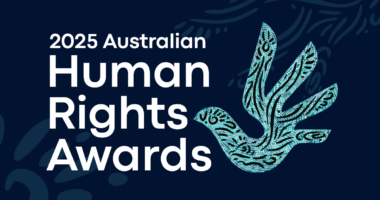200 bespoke temperature gauges are being strategically positioned across the City of Sydney to accurately measure local heat island effects and help prepare our community for hotter summers.
The study is being carried out with Western Sydney University and will focus on mapping air temperatures across our area throughout the summer while investigating the thermal performance of assets like our trees and parks.
“We are in a climate emergency. This year is on track to be the hottest Australia has ever experienced. Our climate is trending warmer and the weather is becoming more extreme, so we must prepare and adapt,” Lord Mayor of Sydney, Clover Moore AO said.
“This important study will identify microclimates and help us understand where we can concentrate the most appropriate heat adaptation actions. It’ll also help us understand what is working already and inform the development of more cooling strategies to help our communities mitigate the worst impacts of rising temperatures.
“Sydney is one of the most liveable cities in the world but we need to prepare now for our future climate so we can all adapt and thrive.”
The CSIRO has forecast Sydney to have a climate more like Grafton in northern NSW by 2050 and this is the first time a local government area in Sydney’s east has been mapped in this way.
Air temperature loggers used in the study are shielded from direct solar radiation inside reusable and passively ventilated white aluminium cans.
They’ll be deployed mainly in trees and will record temperatures every 10 minutes providing more than 3 million data points throughout the study, which runs until March 2024.
Air temperature will be measured by 150 loggers and 50 others will monitor air temperature and relative humidity which can accurately gauge the so-called ‘feels like’ temperature.
Project lead researcher Dr Sebastian Pfautsch from the Urban Transformations Research Centre at Western Sydney University has studied the impacts of summer heat for years in the west.
“It is absolutely necessary to begin benchmarking the impacts of heat in the eastern part of our great city,” Dr Sebastian Pfautsch said.
“Without a refined understanding of the urban microclimate, its hotspots and cool zones, workers and local populations are left defenceless when extreme heat strikes. The question is not if the city centre will ever see 45°C, but rather how well the city is prepared to care for its people when the mercury hits new records.”
The loggers will be positioned in areas with varying levels of canopy cover, as well as near hard infrastructure like roads and buildings, to measure the varying temperatures.
The City of Sydney has set ambitious goals for the area to be net zero by 2035. We also aim to increase tree canopy cover to 27 per cent, and green cover to 40 per cent by 2050.
Findings of the study are expected to be completed in September 2024.
For media enquiries contact Andrew Booth: 0482 530 091 or email [email protected]
For interviews with Clover Moore AO, Lord Mayor of Sydney contact Paul Mackay. Phone 0436 816 604 or email [email protected].
For more stories from your local area, visit news.cityofsydney.nsw.gov.au

